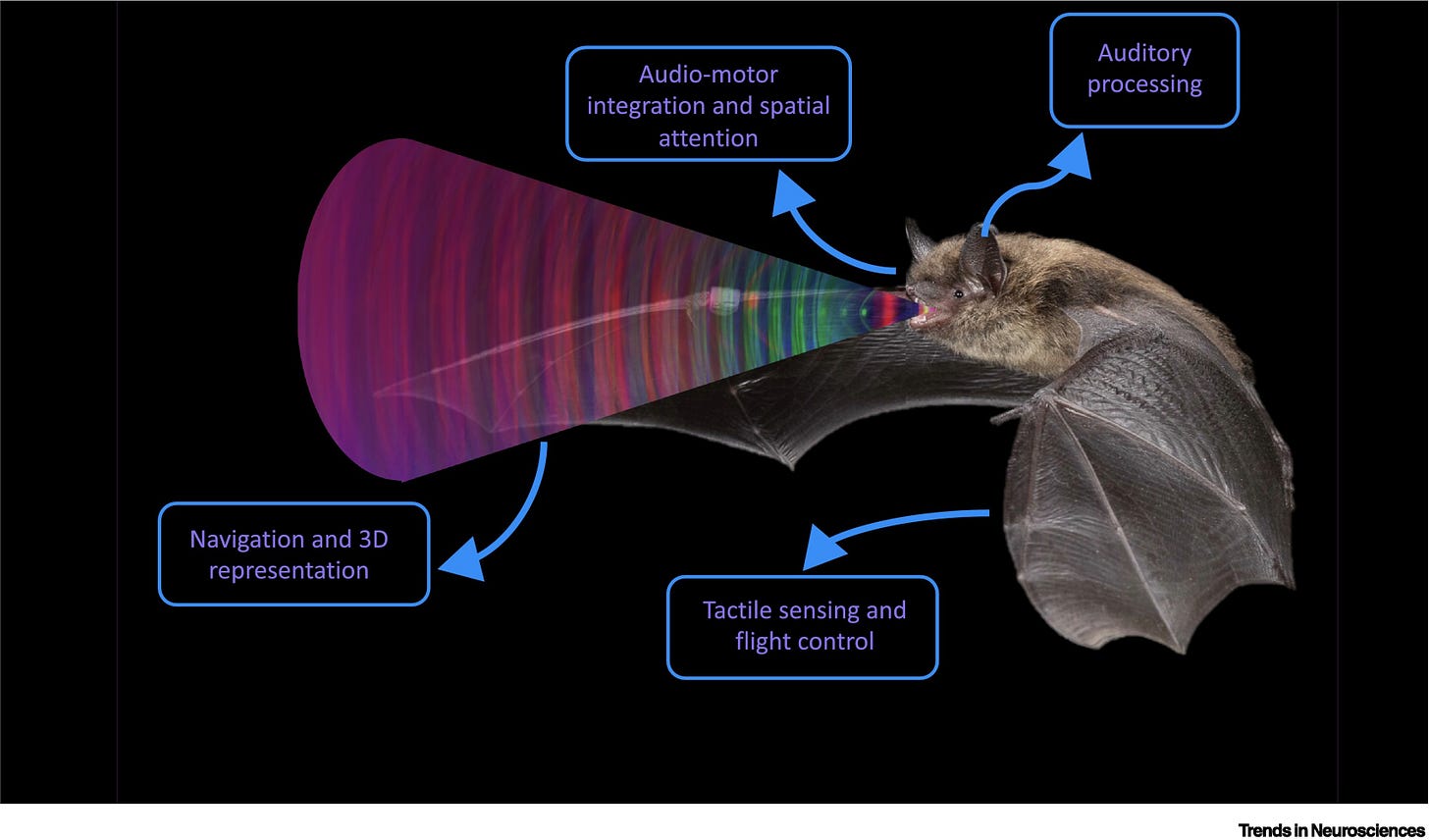8. Cognitive Learning (III)
Meaning and the Evolution of Consciousness
Can the level of neuronal integration just discussed be measured?
The integrated information theory (IIT) of consciousness developed by Giulio Tononi and colleagues posits a specific metric, phi (Φ), for assessing how complexly wired or integrated the neurons of a nervous system are with one another, and directly identifies this measure with the level of sentient awareness of an animal. More conservatively, we can say that such integration levels likely correlate directly to degrees of consciousness, in which case Φ level, if it could be directly measured, could help us quantify conscious depth.[i]
IIT posits a connection between an animal’s neuronal complexity (Φ) and its general intelligence and problem-solving capacity, demonstrating the deep links between learning and consciousness.[ii] Indeed, the increase in Φ across the evolutionary tree is helpful for mapping the complexification of animals on the plane of Mind, and can aid our survey of the complexification of meaning within the domain of Cognitive Learning. Christof Koch provides a visualization of this neuronal complexification across multiple species in his book The Feeling of Life Itself (Figure 1.10).
Figure 1.10. Increasing Consciousness and Intelligence in Animals[iii]
The varying levels of neuronal integration in animals will thus translate into different sorts of subjective experience, and, with it, different qualia systems that frame meaning in different ways relative to adaptive context.
For instance, the mouse in Figure 1.10 will have a unique subjective experience that emerged through the integration of its species-specific sense for value states and goals relative to its environmental niche, typical food sources, etc. Simply (and clichély) put, cheese is meaningful for a mouse. The more complex dog will have its own (though evolutionarily related) values. A frisbee will be subjectively meaningful to it, but not to the mouse.[iv] In short, different brains and nervous systems in different transjective contexts will be structured differently according to niche and need, though the underlying mechanics of meaning and relevance realization remain the same. All animals have their transjective values, their relative senses of meaning, which will be experienced differently at the subjective level and feel differently relative to neuronal complexity.
The issue of qualitatively distinct (and potentially incommunicably different) forms of consciousness for different beings was famously raised by philosopher Thomas Nagel in his oft-cited 1974 essay, “What Is It Like to Be a Bat?” In it, Nagel reflects on the ways that different animals’ specific sense organs and ecological aims so color their subjective experience that it is difficult to see how one context-informed consciousness could even imagine the conditions of differently informed consciousnesses. “Our own experience,” he writes,
provides the basic material for our imagination, whose range is therefore limited. It will not help to try to imagine that one has webbing on one’s arms, which enables one to fly around at dusk and dawn catching insects in one’s mouth; that one has very poor vision, and perceives the surrounding world by a system of reflected high-frequency sound signals; and that one spends the day hanging upside down by one’s feet in an attic. In so far as I can imagine this (which is not very far), it tells me only what it would be like for me to behave as a bat behaves. But that is not the question. I want to know what it is like for a bat to be a bat. Yet if I try to imagine this, I am restricted to the resources of my own mind, and those resources are inadequate to the task.[v]
Nagel is often cited as a seminal voice on this topic, but in fact such insights had already been anticipated a generation earlier by Jakob Johann von Uexküll,[vi] a German biologist immensely influential on the fields of phenomenology, semiotics, and cybernetics.[vii] Von Uexküll developed the idea that animals participate in a species-particular “Umwelt” (or “encompassing world”) based on the specific kinds of sense organs they possess and the capacities for action and cognition these afford.
Keep reading with a 7-day free trial
Subscribe to Brendan Graham Dempsey to keep reading this post and get 7 days of free access to the full post archives.





